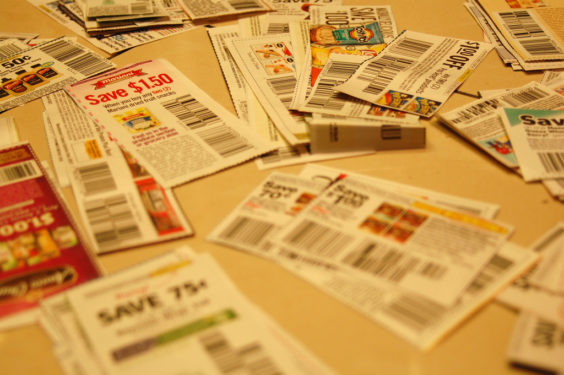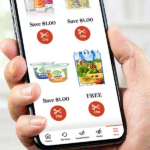
Another mid-year report confirms that coupons are not as good as they used to be. But there may be a bright side. Companies aren’t just pocketing the extra money by cutting back on coupons – they’re channeling that money into other promotions and discounts instead.
That’s the theory, at least, put forth by the coupon processing and analytics company Inmar. Its Mid-Year Promotion Industry Analysis asks the question: if coupon values, volume and redemption rates are all going down – where’s all that money going?
First, the numbers. 173 billion coupons were distributed in the first half of 2015, down slightly from this time last year. But redemption rates were down an alarming 12.5%. Printable coupons led the decline, with a redemption rate 28% lower than the first half of 2014.
That means roughly the same number of coupons were available in the first six months of the year, but far fewer of them were actually used. Why? Perhaps because the coupons themselves haven’t been so great.
Coupons’ average face value was $1.74, which sounds pretty good. But much of that value came in the form of non-food coupons, which simply aren’t used as often as food coupons. In fact, while average nonfood coupon values soared to $2.10, food coupon values slumped to $1.11. The number of items you need to buy to get the deal also increased, while expiration dates approached even more quickly.
So are manufacturers just being stingy? Inmar thinks they’re just shifting their promotional dollars elsewhere.
According to Nielsen, over the past decade, companies worldwide have doubled the amount of money they spend on trade promotions, such as in-store displays, demonstrations and, most commonly, price discounts. Trade promotion is now a trillion-dollar-per-year expense, and manufacturers “show no sign of pulling back, doing all they can to stay competitive in today’s challenging economy,” Nielsen reports.
Wait, you might think – the sales at your local store haven’t been that great, to explain away the decline in coupon values.
But consider this – just a few years ago, there was no such thing as Ibotta, SavingStar, Checkout 51 and any number of other grocery rebate apps. Target didn’t have Cartwheel, its in-house app that offers percent-off discounts on hundreds of items. And there were no personalized sale prices linked to store discount programs like Safeway’s Just For U.
Trade promotion – not necessarily coupons – is where the “innovation is happening,” Inmar reports. Sure, digital coupons are becoming more popular, but 90% of available coupons still come from the increasingly antiquated Sunday newspaper. In a survey of coupon users, Inmar found that 82% have smartphones, and access to apps like Ibotta, Cartwheel and Just For U. But only 37% subscribe to the Sunday paper. Shoppers who used to look through the newspaper for savings, are starting to look for deals somewhere else.
And there are only so many promotional dollars to go around. If manufacturers are going to make offers available in a plethora of apps and personalized programs, that money has to come from somewhere. That means either cutting back on in-store sales, or cutting back on coupons.
Of course, the best way to save is by combining deals. Manufacturers may prefer we didn’t, but 39% of shoppers surveyed by Inmar say they tend to use coupons only when an item is already on sale. Add in some cash back from various rebate apps, and together, it equals plenty of potential savings.
So coupons may not be that enticing lately. But if you know where to look, and put in the time and effort, the deals may just be better than ever.











I kinda disagree with this article. I think the coupons in the Chicago Tribune are incredible. High value & different from our regular Rockford paper. I get all my papers for free from two stores that save them for me so that’s an even bigger bonus.